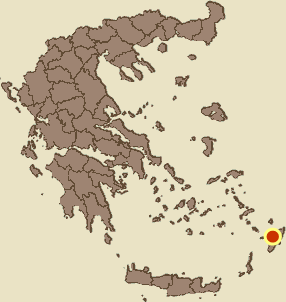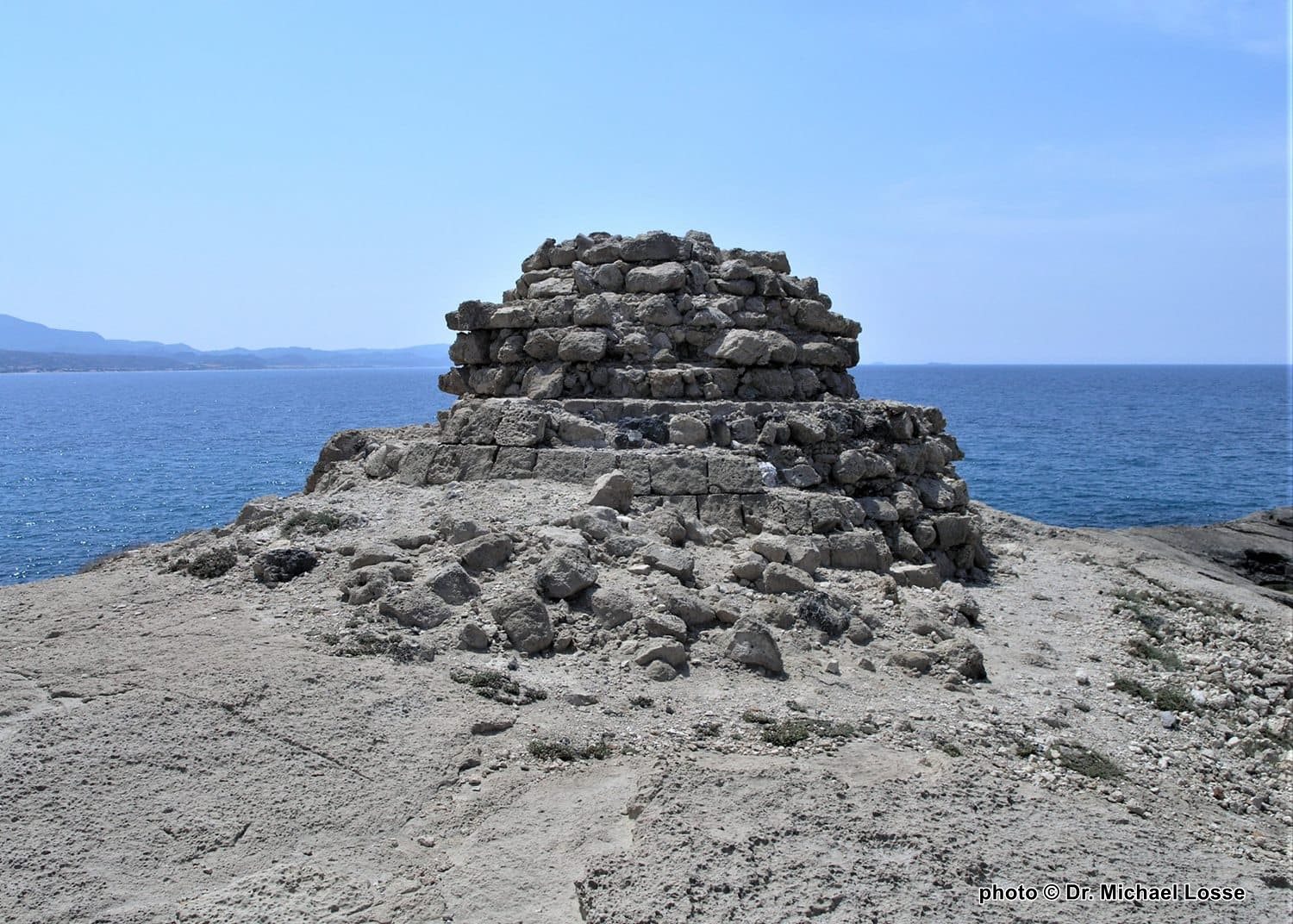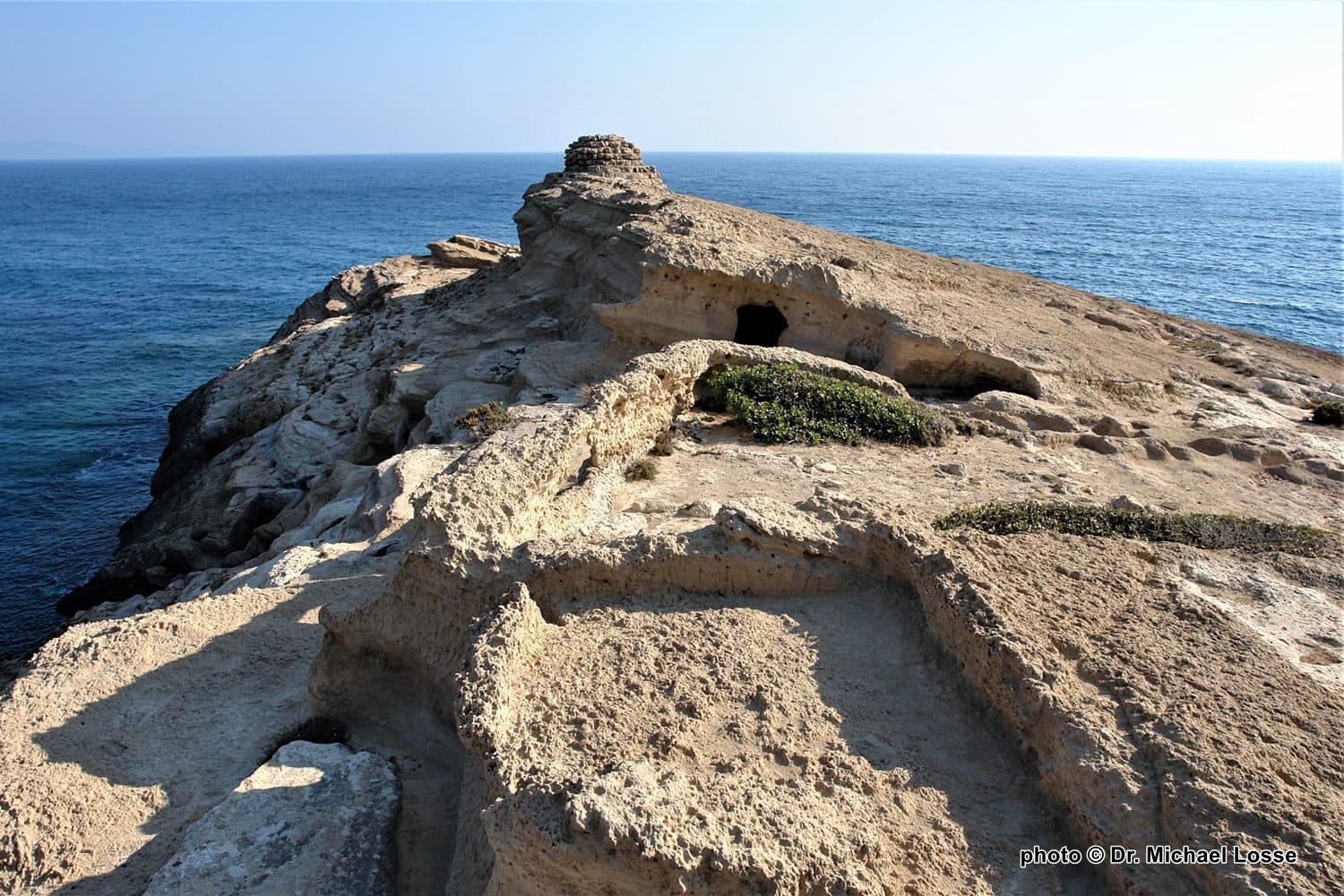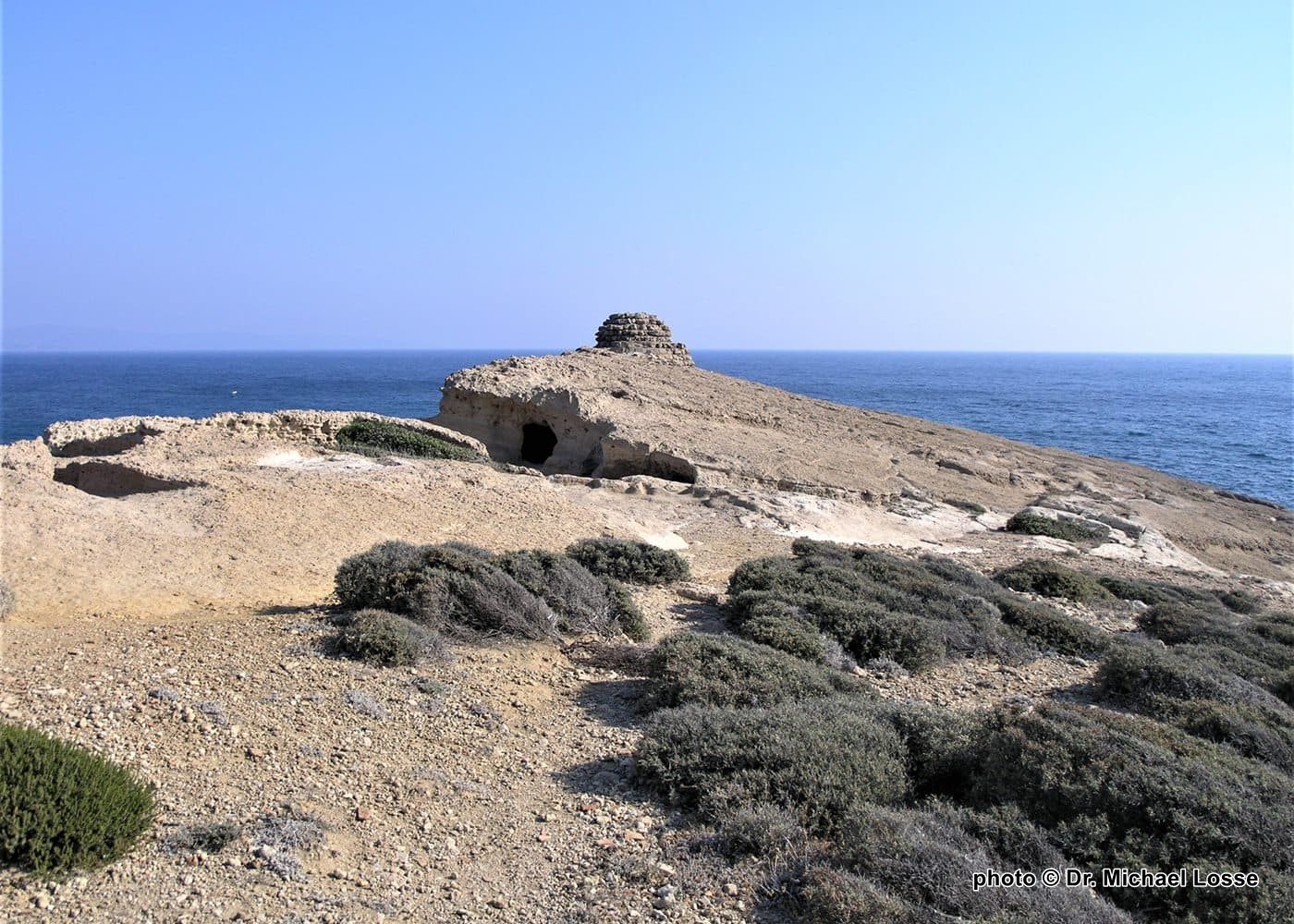Monolithos, Rhodes, Dodecanese,South Aegean
Watchtower at Cape Fournoi
| Location: |
| At Cape Fournoi on the western coast of Rhodes island, south of the village Monolithos |
| Region > Prefecture: |  |
| South Aegean Dodecanese | |
| Municipality > Town: | |
| City of Rhodes • Monolithos | |
| Altitude: | |
| Elevation ≈ 10 m |
| Time of Construction | Origin | |
| c. end of 15th cent. | IOANNITE |
|
| Castle Type | Condition | |
| Watchtower |
Rather Poor
|
Ruins of a cylindrical late-medieval watchtower (vigla) at cape Fournoi on the western coast of Rhodes, south of Monolithos.
Tower Description
Text: Dr. Michael Losse – Singen (Hohentwiel), Germany
General description
Cape Fourni forms a narrow rocky outcrop at the end of the wide Apolakkia Bay on the Rhodian West coast. Close to the top of the cape, which is up to 50 m wide and jumps out to SW, stands the ruins of a small round late-medieval watchtower, 10 m above sea-level.
The building was interpreted by some scholars and researchers as a “lighthouse” or the “base for a statue during late antiquity” (cf. Klaus Gallas: Rhodos. Köln 1984). This did not seem absurd, since late antique rock tombs and an early Christian rock chapel were worked out in the steep East side of the cape, which the French explorers Edouard Biliotti and Abbé Cottret already mentioned in 1881: “In the south of Monolithos, on the Cap Furni, the rocks were flattened near a half-collapsed tower, and a chamber with two divisions was hollowed out. Following the southern flank of the cape, you will soon reach three caves that are not the work of nature. Numerous niches dug into the walls point to ancient Hellenistic tombs. And subsequently the early Christians used them, as the crosses, which are carved everywhere in the rocks, testify to this. Terracottas found there confirm our assumption” (Edouard Biliotti/L’Abbé Cottret: L’Île de Rhodes. Rhódos 1881).
Klaus Gallas (1984) described the ruins as “a circular base of well-worked cuboids, above which five layers of masonry rise”, however, significantly more layers are preserved.
The tower, which I recognized as one of the Watchtowers of the Knights of St. John built in the late 15th/early 16th century in the 1990s, was named and described by the researchers Peter Lock (2006) and Michael Heslop (2007).
The massive little tower, whose diameter at its base is 6.3 m, had only a platform surrounded by a parapet (so-called “platform type”; cf. the tower of Jermata/Cape Viglas on the east coast of Rhodes). The towers ‚talus‘ was added in a 2nd phase of construction, as evidenced by the seam between the walls and the two different types of mortar.
Foundations of several structures on the peninsula as well as a possible barrier may have been in a context with the tower (cf. Jermata).
Access (route / entrance)
Getting there by car: From the village of Monolithos (direction Monolithos Castle/Kástro), signposted.
Hike to the castle: From the village of Monolithos via the road (approx. 7 km) or over partly still preserved old mule trails (Monopatia) in combination with road sections (difficult for non-locals to find) approx. 5 km.
Do not enter the peninsula in the event of a storm or strong winds. Attention: On the area of the peninsula vertical shaft to the sea!
History of the castle
The tower was built in the context of the construction of the watchtower system of the Order of the Knights of St. John (Hospitaller Knights) on the island of Rhodos towards the end of the 15th century, when the Knights started to built a “chain of watchtowers” around the island. Details and exact dates are not known.
Other Info
Sources
Lock, Peter: Freestanding towers in the countryside of Rhodes. In: Elizabeth Jeffreys (Ed.): Byzantine Style, Religion and Civilization. In honour of Sir Steven Runciman. Cambridge 2006, pp. 374-393.
Losse, Michael: Wacht- und Wohntürme aus der Zeit des Johanniter-Ordens (1307-1522) auf der Ägäis-Insel Rhódos (Griechenland). In: Burgen und Schlösser 4, 2009, pp. 245-261.
Losse, Michael: Die Burgen und Festungen des Johanniter-Ritterordens auf Rhódos und in der Ägäis (Griechenland) 1307-1522. (Publisher: Nünnerich-Asmus Verlag) Mainz 2017.
Losse, Michael: Die (Küsten-)Wachttürme des Johanniter-Ritterordens auf der Insel Rhódos (Dodekanes, Griechenland) bis 1522 – Zum aktuellen Forschungsstand. In: fortifikation. Fachblatt des Studienkreises für Internationales Festungs-, Militär- und Schutzbauwesen e.V. (INTERFEST), Vol. 34, 2020, pp. 59-90.
Losse, Michael: Johanniter-Wachtturm am Kap Fourni, www.burgenwelt.or/griechenland/kap_fourni/object.php (2018.12.16).
| First entry in Kastrologos: | December 2020 |
Sources
- Text and photographs (2007) by Dr. Michael Losse
|
|
| Access |
|---|
| Approach to the monument: |
| Getting there by car: From the village of Monolithos (direction Monolithos Castle/Kástro), signposted. |
| Entrance: |
| Free access |






